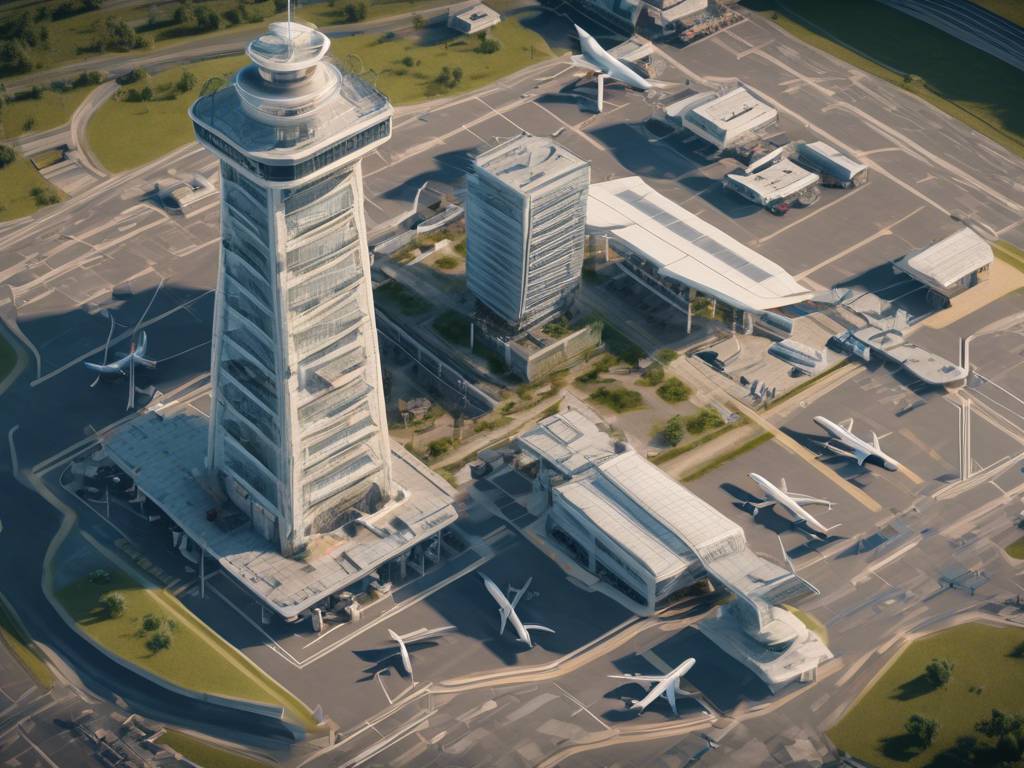The Rise of Digital Towers in Air Traffic Control
In the base of the control tower at London’s Heathrow Airport, a new era of air traffic control is emerging with the development of digital AI towers. Companies are exploring the use of high-definition cameras and AI algorithms to modernize the way air traffic is managed. Despite a fivefold increase in air traffic over the past four decades, the traditional method of air traffic control has seen minimal evolution. The introduction of digital towers has the potential to revolutionize airport operations. Here’s a closer look at how digital towers are reshaping the future of air traffic control:
- The Digital Tower Concept: Hidden below the tower at Heathrow, companies are testing the use of high-definition cameras and AI algorithms to provide controllers with a panoramic view of the runways. The system is designed to overlay radar information on each aircraft, making it easier for controllers to identify planes.
- Enhanced Visibility: The cameras mounted around the airport can provide ground-level views during low clouds, allowing controllers to see through structures and effectively monitor airport activities.
- AI Integration: Machine learning algorithms are being developed to analyze video feeds from the cameras. These AI models can identify support vehicles, assess turnaround times for departing flights, and enhance safety measures during takeoff and landing.
- Operational Efficiency: Digital towers have the potential to improve turnaround times for aircraft, ultimately increasing the number of flights in a year. This operational efficiency is crucial for airlines looking to maximize profits and minimize delays.
The Implementation of Digital Towers
While digital tower technology may seem futuristic, some airports have already embraced this innovative approach to air traffic control. London City Airport and airports in Norway are utilizing digital towers to provide remote air traffic services efficiently. These digital towers offer a cost-effective alternative to relocating traditional control towers and can handle multiple airport operations from a centralized location. The implementation of digital towers is reshaping the future of air traffic control by increasing efficiency and enhancing safety measures.
Challenges and Future Prospects
As digital towers gain traction globally, the United States lags behind in certifying this technology. While the FAA has explored remote tower technology through pilot programs, the certification process may take several years. Despite the potential benefits of digital towers, some American airports are faced with aging control towers that require costly renovations or replacements. The transition to digital towers may present challenges in terms of workforce relocation and AI integration. However, the efficiency and operational advantages of digital towers offer a glimpse into the future of air traffic control.
Hot Take: The Future of Air Traffic Control
In the ever-evolving landscape of air traffic control, digital towers stand as a beacon of technological advancement. While traditional control towers may remain a fixture in American airports for now, the rise of digital towers signals a shift towards modernization and operational efficiency. As AI capabilities improve and global air traffic continues to grow, the integration of digital towers may become essential for managing air traffic effectively. The future of air traffic control lies in the seamless integration of technology and human expertise to ensure the safety and efficiency of air travel worldwide.





 By
By
 By
By

 By
By
